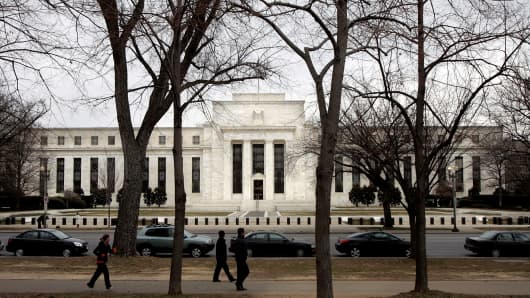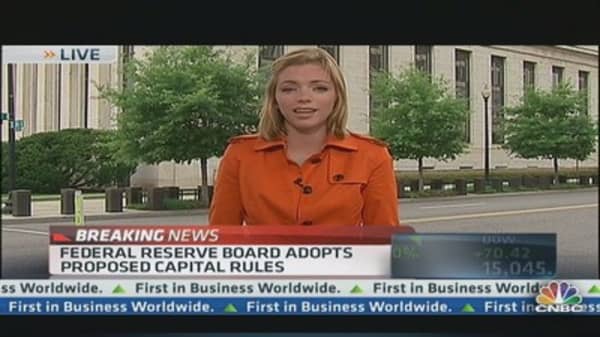In some ways the shift of emphasis was predictable. Alongside full-year and first-quarter results between February and April, most big banks highlighted the fact they were already compliant with Basel III core tier one ratio requirements that will not be fully phased in until 2019.
But there was considerable skepticism among analysts about the way in which many banks were seen to have complied – few banks raised fresh equity, relying instead on "optimizing" risk-weighted asset numbers.
Downgrading the credit ratings of Barclays, Deutsche Bank and Credit Suisse this week, Standard & Poor's highlighted that all three continue to be highly leveraged institutions", with risks that are "not adequately captured by economic capital models or regulatory capital requirements".
(Read More: S&P Cuts Ratings of Credit Suisse, Barclays, Deutsche Bank)
A growing body of opinion, including the Basel Committee, believes a leverage ratio is a vital "backstop" measure. "Current risk-weights allowed financial institutions to become incredibly levered," Paul Tucker, the Bank of England deputy governor, said recently.
Last week the Basel committee that oversees those global rules, said banks should have to report leverage ratios according to a new formula from 2015, though banks would have another three years ahead of complying with a minimum 3 percent ratio.
In practice that means for every $100 a bank lends or otherwise puts at risk, it must be funded with at least $3 of equity. That standard, reformists on both sides of the Atlantic are now arguing, is far from satisfactory.
Regulators realized that relatively stable markets made it feasible to mount a second push on capital. "We saw a window," says one policy maker. "The market was relatively stable. There was an area of fertility."
(Read More: How It Happened: Markets, ECB and BoE Decisions)
Concerns raised at the Bank of England's Financial Policy Committee in March led to last month's surprise demand from the BoE's Prudential Regulation Authority that the UK's eight big banks should comply early with a new 3 percent leverage ratio.
U.S. reformists were eyeing far more extreme measures. David Vitter, a Republican senator, and Sherrod Brown, a Democrat, put forward a bill in April suggesting big U.S. banks should be forced to hit leverage ratios of as much as 15 percent.
Though the Brown-Vitter bill may never pass into law, it appears to have helped galvanize a fresh zeal in policy makers, such as Dan Tarullo, a governor at the Federal Reserve who said recently that Basel's 3 percent leverage ratio "may have been set too low".
This week's Fed document on Basel III endorsed the global leverage ratio. Though the U.S., unlike Europe and other parts of the world, has long had a ratio, it has been seen as ineffective.




